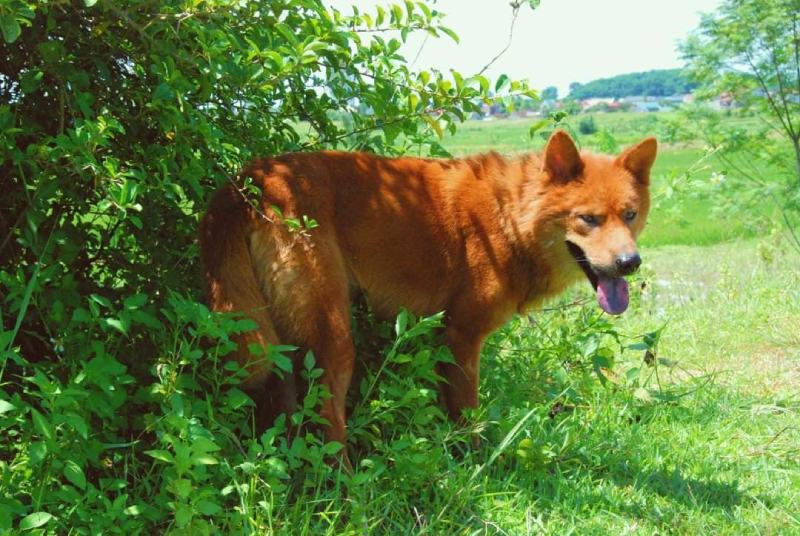Can Dogs Eat Tamales? What the Science Says
By Beth Crane
Updated on

Tamales are a traditional Mexican food that is versatile and filled with various fillings, ranging from meat to fruit. The dough of a traditional tamale is called mesa; the mesa is spread on a corn husk and topped with the fillings before being steamed. Dogs can eat tamales occasionally, but they’re not ideal and should be avoided if possible; most tamales contain harmful ingredients.
Why Are Tamales Not Great for Dogs?
Tamales are commonly found in supermarkets in cans, cooked fresh, or served in restaurants. The problem with tamales is that they can be made with many ingredients, including those that can be beneficial for dogs and those that are highly toxic. For example, traditionally made tamales often contain onions and garlic, which are toxic to dogs.
The ingredients commonly found in tamales include the following:
- Onion: Onions are toxic to dogs and shouldn’t be given to them at any time. They contain N-Propyl Disulphide, a compound that leads to break down of red blood cells in dogs. It causes the breakdown of these cells through hemolysis, as the dog’s immune system thinks the cells affected by N-Propyl Disulphide are invaders. All preparations of onions are toxic to dogs, including raw, cooked and powdered.
- Garlic: Garlic belongs to the same family as the onion and causes the same hemolytic anemia.1 It can only take between 15 and 30 grams of garlic to cause serious or fatal effects. Some dogs are more sensitive than others (especially Japanese breeds) and will experience adverse effects from garlic ingestion despite the amount being under the toxic threshold.
- Garlic or onion powder: Garlic and onion powders are more concentrated versions of the vegetables, and only a small portion is needed to reach a toxic level. They’re the most common ingredients in tamales and should never be given to dogs.
- Corn/Plantain husk: The husks tamales are served in are hazardous to dogs and should never be given. The husk is tough and can cause choking, but the real danger occurs if a dog manages to swallow it. Husks aren’t digestible and can cause intestinal blockages requiring emergency surgery.
- Salt and Fat: Masa dough is often made with too much salt. Dogs are much more sensitive to salt than humans, and too much can cause salt toxicity, which can be fatal if large amounts are ingested. Fat is also part of the masa dough mix, and it is commonly made with lard instead of oil or butter. Too much fat can cause gastrointestinal upset and a painful inflammation of the pancreas (pancreatitis).
- Spices: Spices used in tamale mixes include bay leaf and paprika. Both these spices are known to cause gastrointestinal upset in dogs, including causing boating, vomiting, and diarrhea.
- Hot peppers: Hot peppers, hot pepper flakes, and powdered chilis are often used in tamales and shouldn’t be given to dogs since they can cause vomiting, diarrhea, and painful stomach cramps.

Can My Dog Eat Canned Tamales?
Dogs shouldn’t be allowed to eat canned tamales; besides being very high in salt, sugar, and fat, they often contain all the ingredients mentioned above that are toxic to dogs.
Are There Any Tamales That Are Healthy for Dogs?
Homemade tamales with the husk removed that are low in salt and fat and are filled with non-toxic ingredients such as berries, chicken, or beef, are relatively healthy. However, even in homemade tamales, the amount of fat and salt is too much for dogs, so it’s best to err on the side of caution and refrain from serving them.
What Should I Do If My Dog Eats Tamales?
If your dog has eaten a store-bought or restaurant tamale and you don’t know or can’t find the ingredients list, it’s best to take your pet to their vet. The same goes for homemade tamales that you know contain toxic ingredients such as onion, especially if your dog has eaten the husk.
If you have the ingredients list or label from tamales they’ve eaten, bring it to the vet’s office so the vet can quickly see the exact ingredients your dog has eaten. Tell them whether your dog ate the husk and how much of the tamale was eaten and when.
Treatments can include inducing vomiting, imaging (particularly if your dog ate the husk), blood tests, medications, or supportive treatment like fluid therapy.

What to Look Out For
If your dog eats a tamale but doesn’t eat the husk, your vet might recommend to monitor them for any signs that something isn’t right. The following signs are commonly seen in dogs that have eaten toxic ingredients such as onion:
- Lethargy and weakness
- Listlessness
- Vomiting
- Diarrhea
- Pale gums
- Collapse
- Loss of muscle coordination
If you notice any of the above signs in your dog after eating tamales, don’t delay: take them straight to the vet for an examination.

Final Thoughts
Tamales are a Mexican delicacy that delights the taste buds, but they’re not recommended for dogs. Dogs are more sensitive to the ingredients than humans are, and some of the ones we find most delicious (such as onion and garlic) are highly toxic to dogs. So, it’s best not to give your dog tamales, but if you cannot resist your dog’s pleading eyes, we advise looking away! In any case, ensure your dog never eats the husk. It is a choking hazard and can cause a fatal intestinal blockage.












